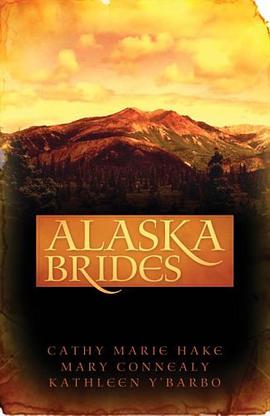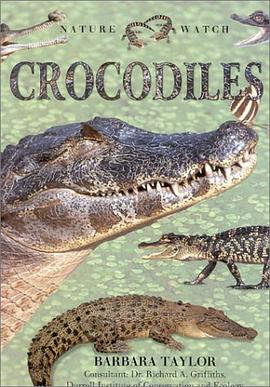

具体描述
'...visually stunning and mentally stimulating' - "Scientific American". 'the author of "What Painting Is" (1998) has written a fascinating new book filled with gorgeous illustrations that would inspire us 'to learn to see anything.' It's a tall order, to be sure, but one that the author pulls off admirably!. "How to Use Your Eyes" is a wondrous visual tour that Elkins hopes will help us 'learn to use our eyes more concertedly until the details of the world slowly reveal themselves.' Readers will be inspired to stop and smell - nay, see - the roses' - "Booklist".'Elkins invites his readers to extend perception beyond narrow specialties to see meaning in the mundane. He is ever curious, his mind seemingly in overdrive' - "Chicago Tribune Magazine". 'In that fascinating zone where creative imagination and scientific observation meet, Elkins shines a conceptual flashlight, aiming to illuminate in 32 short chapters a fraction of what we are missing daily. He asks us to use our eyes and our minds differently, to see the world as few of us bother to see it because we rarely make the effort' - "Library Journal".Grass, the night sky, a postage stamp, a crack in the sidewalk, a shoulder are ordinary objects of everyday life. But when we look at them - really look at them - what do we see? In the tradition of John Berger's bestselling "Ways of Seeing", James Elkins' "How to Use your Eyes" invites us to look at - and maybe see for the first time - the world around us, with breathtaking results. Here are the common artifacts of life, often misunderstood and largely ignored, brought into striking focus. A butterfly's wing pattern encodes its identity. A cloudless sky yields a precise sequence of colors at sunset. A bridge reveals the relationship of a population with its landscape. With the discerning eye of a painter and the zeal of a detective, Elkins also explores complicated things like mandalas, the periodic table, or a hieroglyph, remaking the world into a treasure box of observations - eccentric, ordinary, marvelous. "How to Use Your Eyes" will transform your view of nature and the mind.
作者简介
詹姆斯.埃尔金斯,美国芝加哥美术学院美术史论与批评戏主任,爱尔兰科克大学学院美术史系主任,著有《绘画与泪水》、《身体的图象:痛苦与变形》、《图象之城》、《何为绘画》、《透视诗学》、《对象的反视:论看的本质》、《我们的图象为什么会令人迷惑不解》、《为什么艺术是不能教的?》、《批评怎么了?》、《艺术的种种故事》、《视觉研究:一种怀疑性的导论》以及《视觉品味-如何用你的眼睛》
目录信息
读后感
看这本书起始还好,看到有关汉字那里非常生气. 摘录几句话: 日本的草书是一种最令人惊讶的风格. 没有一种书写系统会像日本的草书那样... 他是没有看过中国的书法还是怎么的?翻译的先生您翻译的时候有没有觉得有些问题??还有就是关于日本的平假名片假名,这个学日语的同志自己看...
评分在看《视觉品味》,从后面倒着看。中间说到人的眼睛总会试图去看什么东西,如果没有可看的,就会假想出东西来看。很有意思的话题,但他写得不好,句子过于生硬,要想一想才明白,读起来累。看到如何看日落时,也讲了很多新奇的东西,比如地球影,但却无法进入心里。无比怀念《...
评分我们有多人知道眼睛需要如何的去使用它的饿功能,又有多少知道人知道你也可以象哥伦布发现新世界一样发现新的知识。
评分很好的一本书,解决了高中时候存有疑惑的一个问题;现在才知道眼前的"浮游物"居然是视网膜出血被挤到眼睛水液层的红细胞~(为了重现“浮游物”场景,又盯着墙壁看了一会、牺牲了几个红细胞~) ishare里有电子版~
评分有无趣的成分,前言大概是最美妙的一章 ·以前不过是地平线上的一抹微光,如今却成了特别的幻境,而且他让我了解了我行进其中的空气的形状。 ·我们每天看到他们,又忽略了他们 ·它只是令人炫目的白光——他所看到的也只是头上悬浮的巨大而完美的光圈的一小部分而已 ·安宁...
用户评价
M1上学期text seminar text,导师对这个作者蜜汁喜爱
评分M1上学期text seminar text,导师对这个作者蜜汁喜爱
评分M1上学期text seminar text,导师对这个作者蜜汁喜爱
评分M1上学期text seminar text,导师对这个作者蜜汁喜爱
评分M1上学期text seminar text,导师对这个作者蜜汁喜爱
相关图书
本站所有内容均为互联网搜索引擎提供的公开搜索信息,本站不存储任何数据与内容,任何内容与数据均与本站无关,如有需要请联系相关搜索引擎包括但不限于百度,google,bing,sogou 等
© 2025 book.quotespace.org All Rights Reserved. 小美书屋 版权所有




















